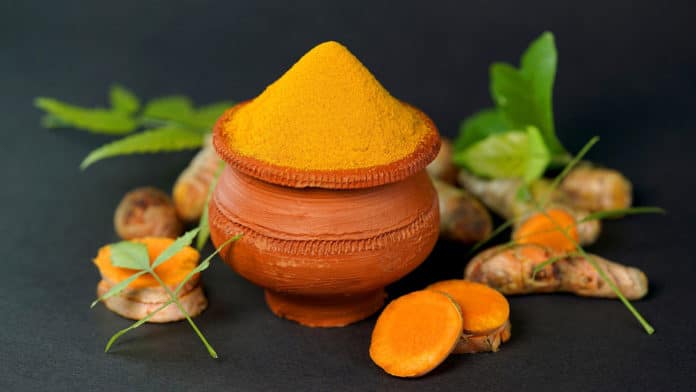Turmeric, the golden-colored, strongly flavored spice, is an ancient spice mentioned in various Ayurveda treatises from the Vedic period onwards. Besides being used as a food ingredient, it has a great medicinal value.
A new study has added one more benefit of turmeric to the list. According to UC Riverside bioengineers, their study could optimize the development of lab-grown blood vessels and other tissues to replace and regenerate damaged tissues in human patients.
Turmeric contains a compound called Curcumin, which has anti-inflammatory and antioxidant properties. It is known to suppress angiogenesis in malignant tumors.
Bioengineers found that- delivering Curcumin via magnetic hydrogels into stem cell cultures paradoxically promotes the secretion of vascular endothelial growth factor, or VEGF, that helps vascular tissues grow.
Huinan Liu, a bioengineering professor in UCR’s Marlan and Rosemary Bourns College of Engineering, led a project to investigate Curcumin’s regenerative properties by coating magnetic iron oxide nanoparticles with the compound and mixing them into a biocompatible hydrogel.
When cultivated with bone marrow-derived stem cells, the magnetic hydrogel steadily releases Curcumin without harming the stem cells. The hydrogels loaded with curcumin-coated nanoparticles secreted more VEGF than the group of hydrogels packed with bare nanoparticles.
Co-author Changlu Xu, a doctoral candidate in Liu’s group who focused on hydrogel research, said, “Our study shows that curcumin released from magnetic hydrogels promotes the cells to secrete VEGF, which is one of the most critical growth factors to enhance the formation of new blood vessels.”
Scientists also used the nanoparticles’ magnetic properties to see whether they could steer them to specific parts of the body. They placed some of the curcumin-coated nanoparticles in a tube behind pieces of fresh pig tissue. They used a magnet to direct the movement of the nanoparticles successfully.
The outcomes suggest that the method could be used to deliver Curcumin to help heal or regenerate injured tissue.
Journal Reference:
- Radha Daya, Changlu Xu et al. Angiogenic Hyaluronic Acid Hydrogels with Curcumin-Coated Magnetic Nanoparticles for Tissue Repair. DOI: 10.1021/acsami.1c19889
